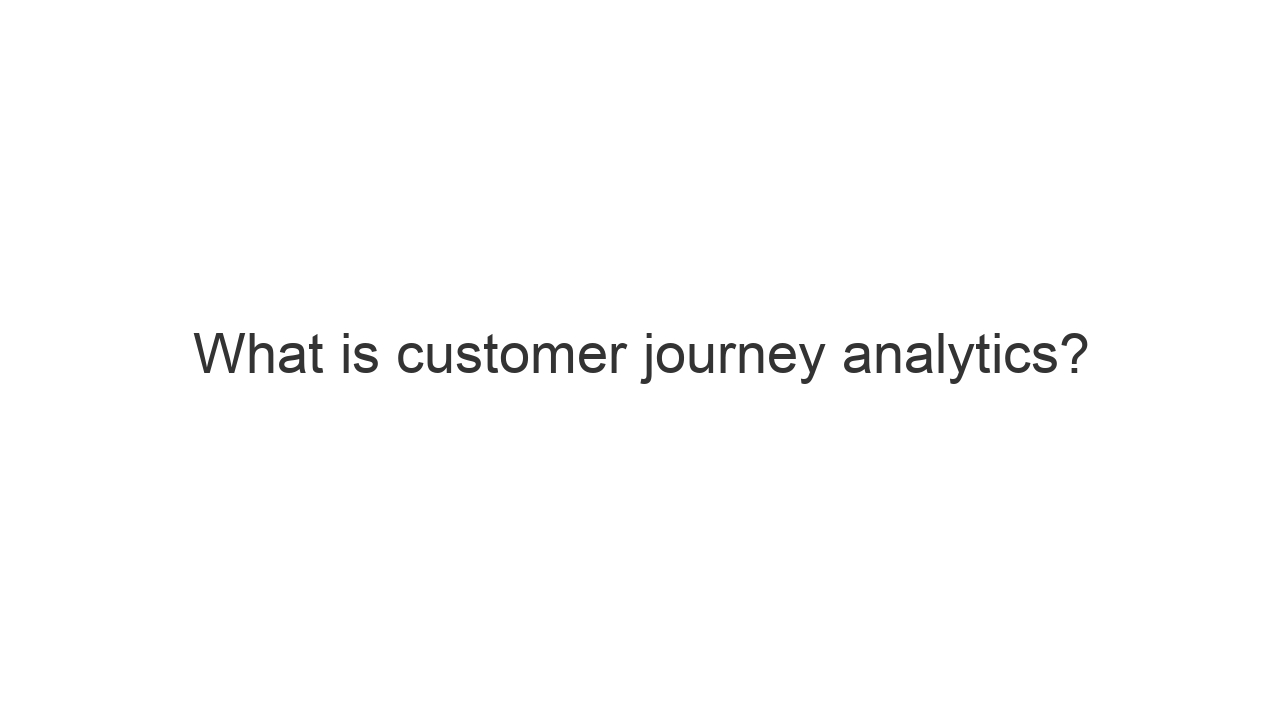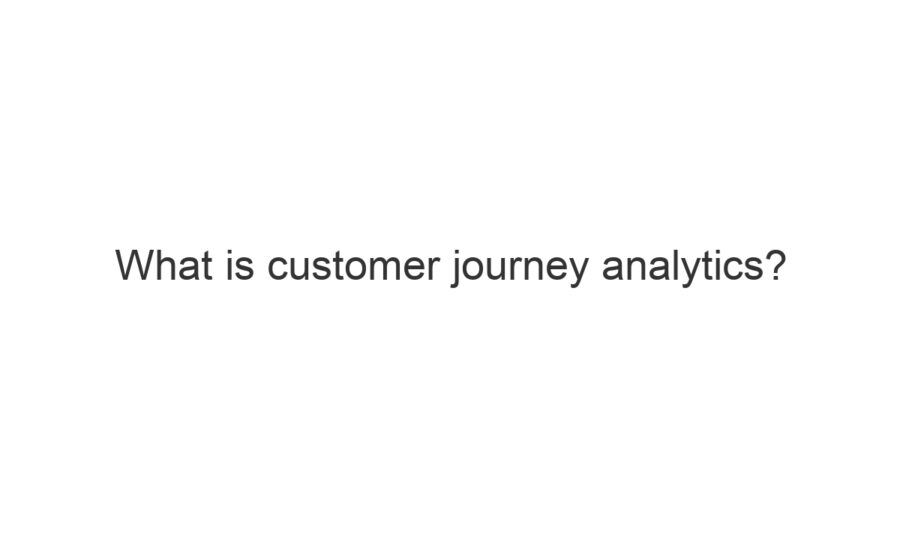Customer journey analytics is the process of collecting, analyzing and deriving insight from customer journeys.
Customer journey analytics helps to bring measurement & insight to the customer journey. Quantifying how many customers are in each part of the customer journey and how things change. It balances quantity and quality metrics. How many took action but also the propensity to do so. This cross analysis helps uncover areas of improvement.
Introduction
Often used in digitally-led businesses, where larger parts of the process can be easily quantified. But traditional businesses can still use this with various data sources, to help identify and quantify demand. Many different types of businesses build and analyze their customer journeys from B2B, SAAS, eCommerce, services and even CPG.
Traditionally it was consumer goods companies which would map customer journeys, to ensure their media coverage and mind share wasn’t interrupted on the path to purchase. As the internet grew, it extended to that. A common challenge was the cross-media, going from offline to online in the customer journey.
Digital analytics companies like Nudge often have features which enable marketers to track their customer journey. And see how customers move through the journey. Conversion rate analysis is an intertwined analysis which can be helpful.
How to set up
This is a two fold process, which starts with mapping the customer journey. Then second, implementing measurement for each of those steps. And then taking action from these insights.
1. Map the customer journey
- Start with documenting the steps customers take.
- Visualize this with a flow chart, or on a whiteboard.
2. Collect data
- Implement measurement on each step of the process.
- Collect data on how well it performs.
2. Optimize
- Revisit the customer map, and overlay the data collected.
- Identify choke points, or points of friction where customers are dropping off.
- Implement changes.
Then collect data, and repeat.
It may be useful to consider industry benchmarks when analyzing the customer journey. Over the long run, typically customer journeys convert at 0.5% from eyeball to actual customer. However each step in the journey will have varying levels of conversion rates. Depending on the step being taken and the audience it is served to.
Measurement of Customer Journeys
Typically an ‘event’ is fired in the browser or app when a user takes action. This event is then recorded by the analytics system in a database. And overlaid with other data they may have. This records the action, and then can be analyzed later.
These events should be regularly audited, to ensure correct measurement.
Related reading:
FAQs
What is customer journey mapping?
Customer journey mapping is the process of visually displaying each step a customer goes on in buying your product. Typically from awareness through to purchase. Often firms will also map, what happens after purchase.
As a process, customer journey mapping, enables marketers to better understand their customers. Find areas of opportunity and improvement.
A clean whiteboard is recommended.
What role does analytics play in a customer journey?
Analytics helps provide an idea of how many customers are at each step in the customer journey. This context is invaluable for understanding demand, identifying bottlenecks and the overall performance.
Without analytics it’s just a journey. With analytics it’s a business process and an asset. Analytics enables marketers to act more strategically when it comes to their customer journeys.
Where does SEO fit into the customer journey?
Search engine optimization plays multiple roles in the customer journey. It can be involved in at every part of the journey:
- Awareness, discovery of the product/service as they are looking for related topics or the direct problem.
- Consideration, as they evaluate the product versus others.
- Purchase, where can I buy this.
For many companies they are focused on the awareness part, helping find prospective customers who are searching for a solution. But it is important to note it can play a role in multiple parts.
What is a common use case of a customer journey?
A common use case of a customer journey is in marketing strategy sessions. To help identify areas of the customer journey that need attention, or to help provide context for marketing plans.
How to create a customer journey map for SAAS
To create a customer journey map for SAAS you need a big canvas. Whether it is a presentation, or an actual whiteboard. Then you can start by listing all the different ways people uncover your business and go through the purchasing process. Then try to connect the dots, as to the logical steps a user takes.
This can also be done with Sticky notes on a wall.
Where possible, quantifying each part of the customer journey, helps visualize how customers are moving through it.
..

|
|---|



